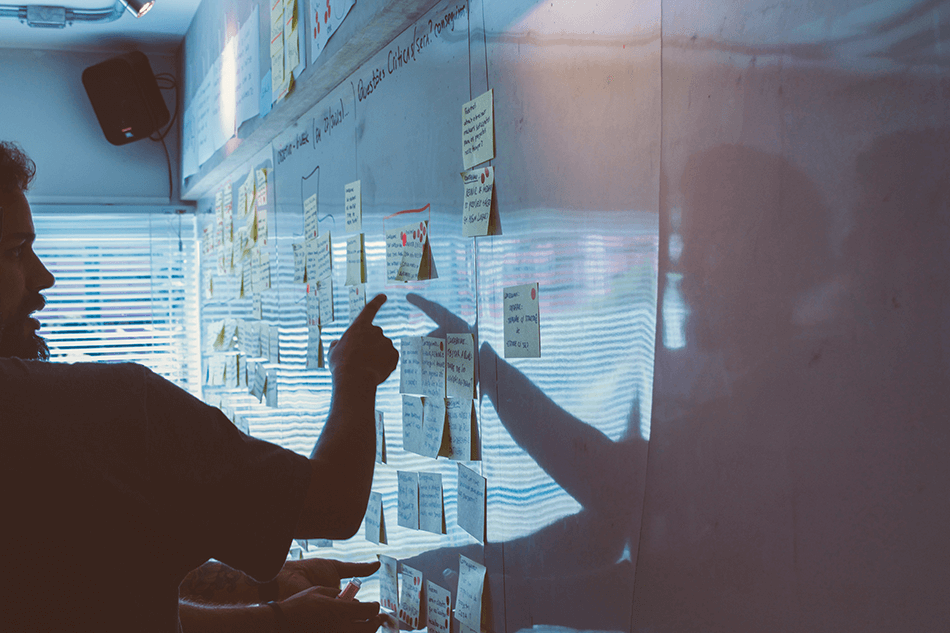In today’s fast-paced and increasingly competitive business environment, a blame culture can quickly take root within organizations. Blame culture is characterized by an environment in which individuals are quick to point fingers at others when mistakes are made or goals are not met, rather than focusing on problem-solving, collaboration, and learning from setbacks. This type of shift of culture can lead to a toxic work environment, marked by fear, mistrust, and low employee morale.
The presence of a blame culture can have serious consequences for both employees and the organization as a whole. Blame cultures reinforce employees to feel constantly on edge, fearing that they will be blamed for any mistakes, leading to increased stress and decreased job satisfaction. This fear can also stifle innovation and creativity, as individuals may be reluctant to take risks or propose new ideas for fear of being blamed if things go wrong or do not go as planned. Furthermore, a blame culture can undermine collaboration and teamwork, as employees may be more focused on protecting themselves from blame than on working together to achieve common goals.
To create a healthy, high-performing work environment, it is essential for organizations to address blame culture and replace it with a culture of accountability and growth. By fostering an environment in which employees feel supported and encouraged to take ownership of their work, learn from their mistakes, and collaborate effectively, organizations can unlock their full potential and achieve lasting success. In the following sections, we will discuss five key strategies for stopping blame culture, for taking ownership and responsibility in the workplace and fostering a positive and productive work environment.
The 4 Ways to Stop Blame Culture in the Workplace

1. Encourage open communication
Importance of transparent communication
Transparent communication is vital in dismantling a blame culture and fostering trust within an organization. When employees feel comfortable sharing their thoughts, concerns, and ideas without fear of retribution, they are more likely to work together to address challenges and achieve shared goals. This goes from pitting employees up one another, creating excuses, to taking responsibility and acting like human beings.
Promoting a safe space for open dialogue
Creating a safe space for open dialogue involves actively encouraging employees to share their opinions and provide constructive feedback, both to their peers and to management. This creates blame free culture. This can be achieved through regular team meetings, one person-on-one discussions, and anonymous feedback channels. Leadership should also demonstrate openness to receiving feedback and be willing to engage in honest conversations about areas for improvement.
Emphasizing the value of feedback and learning from mistakes
In a culture of open communication, feedback is seen as an opportunity for growth and learning, rather than a reason for assigning blame or punishment. By emphasizing the value of learning from mistakes, errors and setbacks, organizations can encourage employees to embrace constructive feedback and take responsibility for their actions. Mistakes should be teaching moments instead of having employees pass responsibility to one another.
Declutter The Mind is a meditation app for your workplace to help make your team happier and culture healthier. In an average 9-to-5 work day, just 5 minutes of mindfulness meditation can release stress, improve focus, and boost creativity. For your company, a more mindful team means better workplace culture and teamwork.
2. Embrace a growth mindset
Define growth mindset and its benefits
A growth mindset is the belief that abilities and intelligence can be developed through hard work, learning, and perseverance. By fostering a growth mindset within the organization, employees are more likely to view their own mistakes, challenges and setbacks as opportunities for growth and improvement, rather than as reasons for blame or failure.
Encourage continuous learning and development
To cultivate a growth mindset, organizations should encourage employees to engage in continuous learning and development. This can be achieved through regular training programs, mentorship opportunities, and access to resources that support personal and professional growth.
Emphasize process and progress over perfection
By focusing on the process and progress made, rather than solely on the outcome, organizations can help employees develop resilience in the face of setbacks and discourage blaming and blame-shifting behaviors. Celebrating small wins and acknowledging progress can encourage employees to persevere and learn from their mistakes, rather than fearing failure.
3. Foster a culture of accountability

Clarify roles and responsibilities
Clear communication of roles and responsibilities can help employees understand their individual contributions to the organization’s success and promote a sense of ownership over their work. This clarity can help reduce the likelihood of blame-shifting behaviors and foster a sense of personal accountability for outcomes.
Set clear expectations and goals
By setting clear expectations and goals, organizations can provide employees with a roadmap for success, helping them understand how their efforts contribute to the achievement of organizational objectives. This can empower employees to take responsibility for their performance and work collaboratively with team member to overcome obstacles.
Implement performance management processes that promote ownership
Performance management processes should be designed to encourage employees to take ownership of their work and to focus on growth and improvement. This may include setting realistic and achievable performance targets, providing regular feedback, and recognizing and rewarding employees for their contributions and progress on certain tasks.
By implementing these strategies, organizations can effectively combat blame culture in the workplace and foster a more supportive, accountable, and high-performing work environment.
4. Meditation
Cultivating self-awareness and emotional intelligence
Meditation can be a powerful tool in fostering self-awareness and emotional intelligence among employees, helping them to recognize and manage their biases, emotions, and thought patterns. By developing these skills, employees are better equipped to avoid engaging in blame-shifting behaviors and focus on problem-solving and collaboration.
Enhancing empathy and compassion
Meditation practices, such as loving-kindness or compassion meditation, can help employees develop empathy and compassion for their colleagues. These practices can foster a deeper understanding of others’ perspectives, creating an environment in which blame culture is less likely to thrive.
Strengthening focus and resilience
Regular meditation can also help employees develop greater focus and resilience, enabling them to better handle workplace challenges and setbacks without resorting to the blame game again. By cultivating a calm and centered mindset, employees are better prepared to approach challenges with a solution-oriented attitude.
Encouraging mindfulness practices in the workplace
Organizations can support the adoption of meditation practices by offering resources, workshops, or dedicated spaces for mindfulness and meditation. By encouraging employees to engage in regular meditation, organizations can cultivate a more self-aware, empathetic, and focused workforce, ultimately reducing the prevalence of blame culture in the workplace.
By incorporating meditation as an additional strategy to address blame culture, organizations can further enhance the effectiveness of their efforts to create a more positive, accountable, and high-performing work environment. Learn about Declutter The Mind and bringing meditation to your workplace.
Implementing Change: Practical Steps for Organizations

Assess the current culture
Conduct surveys and gather feedback
To effectively address blame culture within an organization, it is crucial to first assess the current workplace culture. This can be achieved through employee surveys, focus groups, and informal feedback channels. By gathering honest feedback from employees, organizations can gain valuable insights into the root causes of blame culture and identify areas for improvement.
Identify areas for improvement
Based on the feedback gathered, organizations can identify specific areas where blame culture is prevalent, such as communication practices, leadership behaviors, or performance management processes. This information can be used to develop targeted strategies for addressing blame culture and fostering a more positive and accountable work environment.
Develop and communicate a clear vision
Define the desired workplace culture
To effectively implement change, organizations should develop a clear vision of the desired workplace culture, which may include elements such as open communication, collaboration, accountability, and continuous learning. This vision should be aligned with the organization’s mission, values, and strategic objectives.
Communicate the vision to employees and stakeholders
Once the desired workplace culture has been defined, it is essential to communicate this vision to all employees, managers and stakeholders, ensuring that everyone understands the importance of addressing blame culture and the expectations for their behavior and performance. This communication should be ongoing, and leadership should consistently reinforce the vision through their actions and decisions.
Provide ongoing training and support
Offer training programs to develop growth mindset and accountability
To support the transition to a more positive and accountable workplace culture, organizations should provide targeted training programs that help employees develop a growth mindset and embrace personal accountability. These programs may cover topics such as effective communication, feedback, and conflict resolution, as well as strategies for developing resilience and perseverance in the face of challenges.
Provide resources for continuous learning and development
In addition to formal training programs, organizations should also provide resources that support continuous, learning opportunities and development, such as access to online courses, mentorship programs, or opportunities for cross-functional collaboration. By investing in the growth and development of their employees, organizations can foster a culture of continuous improvement and innovation that discourages blame-shifting behaviors no blame culture.
By following these practical steps, organizations can effectively implement the strategies outlined in the previous section and create a workplace culture that is free from blame, fosters accountability, and promotes collaboration and growth.
Conclusion

In conclusion, addressing blame culture in the workplace is essential for creating a healthy, high-performing work environment that fosters collaboration, innovation, and continuous improvement. Blame culture not only has a negative impact on employee morale and productivity but also hinders an organization’s ability to adapt and grow in today’s competitive business landscape.
To effectively combat blame culture, organizations should consider implementing the five strategies outlined in this article: encouraging open communication, encouraging collaboration, embracing a growth mindset, fostering a culture of accountability, empowering employees through trust and support, and leading by example. By adopting these strategies, organizations can create a more positive and supportive work environment where employees feel valued, engaged, and motivated to contribute to the organization’s success.
By addressing blame culture and fostering a more positive and accountable workplace culture, organizations can unlock numerous benefits, including increased employee engagement, higher levels of happiness, improved collaboration, and greater innovation. Ultimately, these benefits can translate into improved organizational performance and long-term success in an increasingly competitive business environment. It is up to leaders and employees alike to take responsibility for creating a culture that values growth, accountability, and collaboration, ensuring a brighter future for the organization and its stakeholders.







